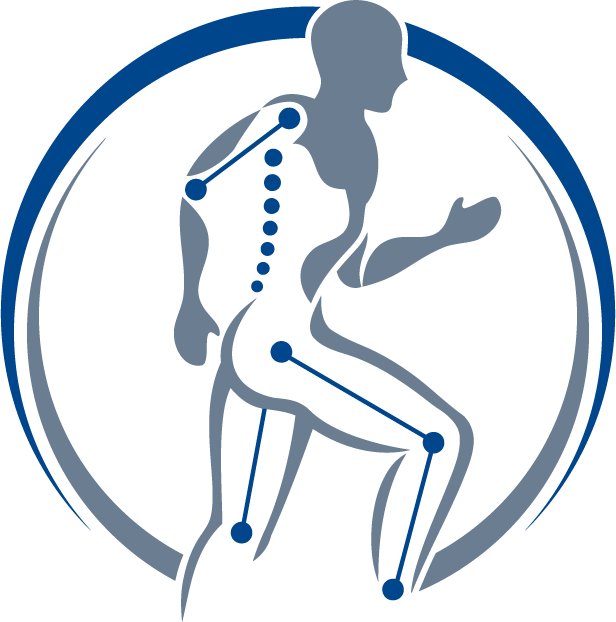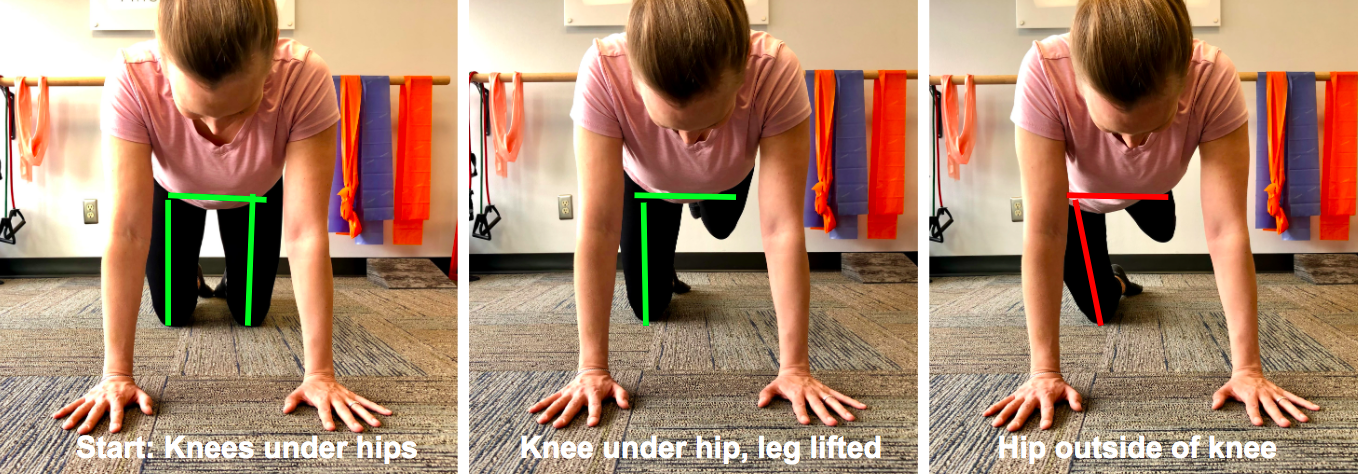Another Look at Hip Drop
Hands and knees (quadruped) exercises allow us to challenge our ability to control spine/pelvis posture with less impact from gravity. This is a great position to challenge and fine tune our movement quality and strength. Quadruped exercises are both common in strengthening programs and important for developing core stability. But many of us are not sure what makes “good form” when completing a quadruped exercise.
You may already be familiar with the concept of ‘hip drop’ while completing standing exercises on one leg as demonstrated in the single leg squat below (if this is confusing, please see this article).
This same concept translates to quadruped exercise. In standing we have a goal of keeping our headlights pointing forward to avoid the pelvis from sinking one side down toward the floor. The same is true for quadruped exercises- we are striving to prevent the raised side of the pelvis from sinking lower to the floor and preventing the pelvis as a whole from shifting to the side. When you learn to control these extra movements with your muscles, it reduces twisting in the spine and protects against low back discomfort.
Weakness in the gluteal on the stance leg is generally to blame for these patterns. The muscle fibers that have the best mechanical advantage to correct the hip drop movement pattern in standing are slightly different than those that correct hip drop (or hip adduction) in hands and knees postures. For this reason you may find it to be very easy to correct hip drop during standing tasks but be quite challenged in quadruped.
How do I know if this is something I need to work on? On hands and knees, lift one leg. While keeping the leg lifted drop the lifted hip down, then raise it up, then find a middle position where you can feel as though if you had headlights they would be pointing toward the ground. This is your starting posture.
You can see in the image below that the orientation of the facets (those vertical pointy bones on the vertebra) interlock, allowing only minimal rotation between the segments.
Why does all of this matter? How many times a day do you need to stand up from the floor or a low surface? Most of us stand up from the floor in a lunge position. Hip weakness can create increased knee ‘wobble’ when standing up. Over time this wobble (knee valgus blog click to read more) creates stress at the hip and knee joint. Any knee wobble in the beginning of the movement is controlled by the same muscles that you are using to control your posture in quadruped (when the hip is bent). If you are challenged in your ability to prevent the hip dropping or the pelvis shifting to the side in hands and knees you will also be challenged when rising from the floor.
Enjoy your quadruped exercises this week thinking about your pelvis posture and why those muscles are so important!
To your movement health,
Ann & Jesse
This blog is not intended as medical or professional advice. The information provided is for educational purposes only and is not intended to serve as medical or physical therapy advice to any individual. Any exercise has potential to cause injury or pain if it is incorrectly done or is not the right exercise for an individual’s medical or physical problems. You should consult with a physical therapist or medical provider for individualized advice.







